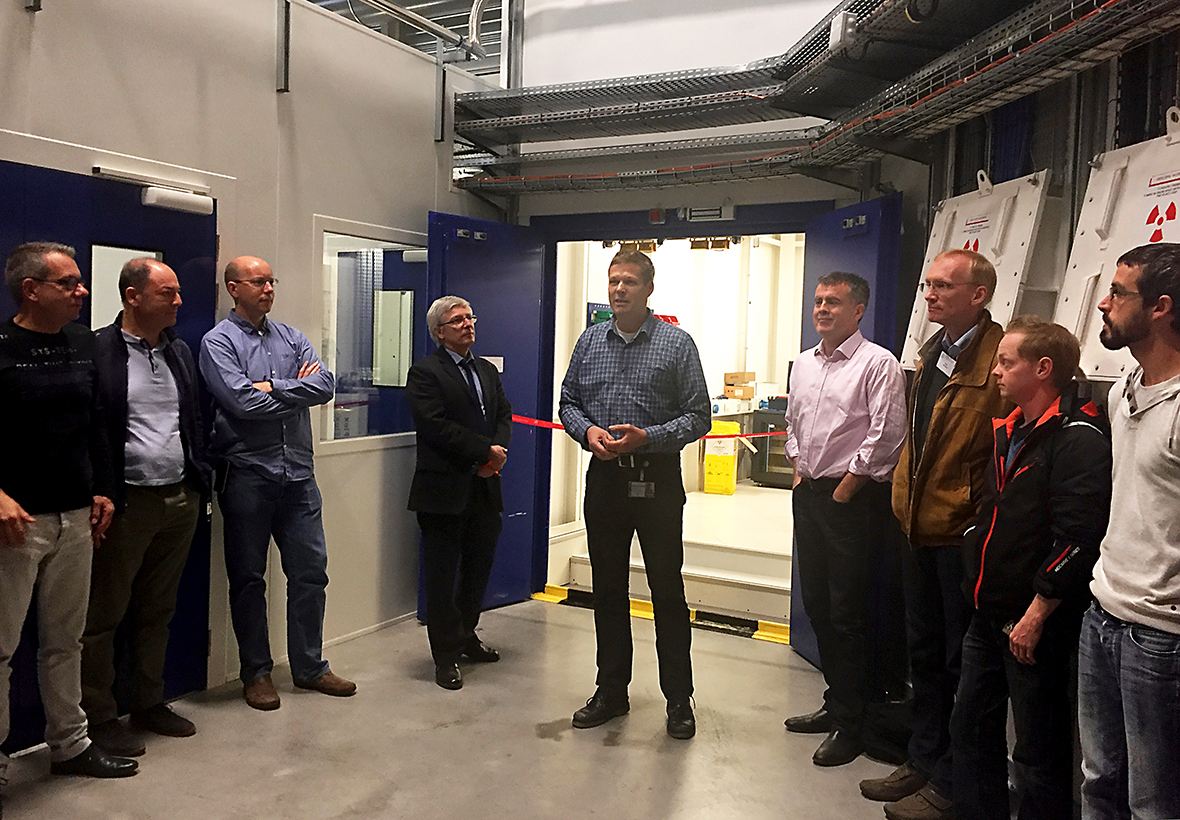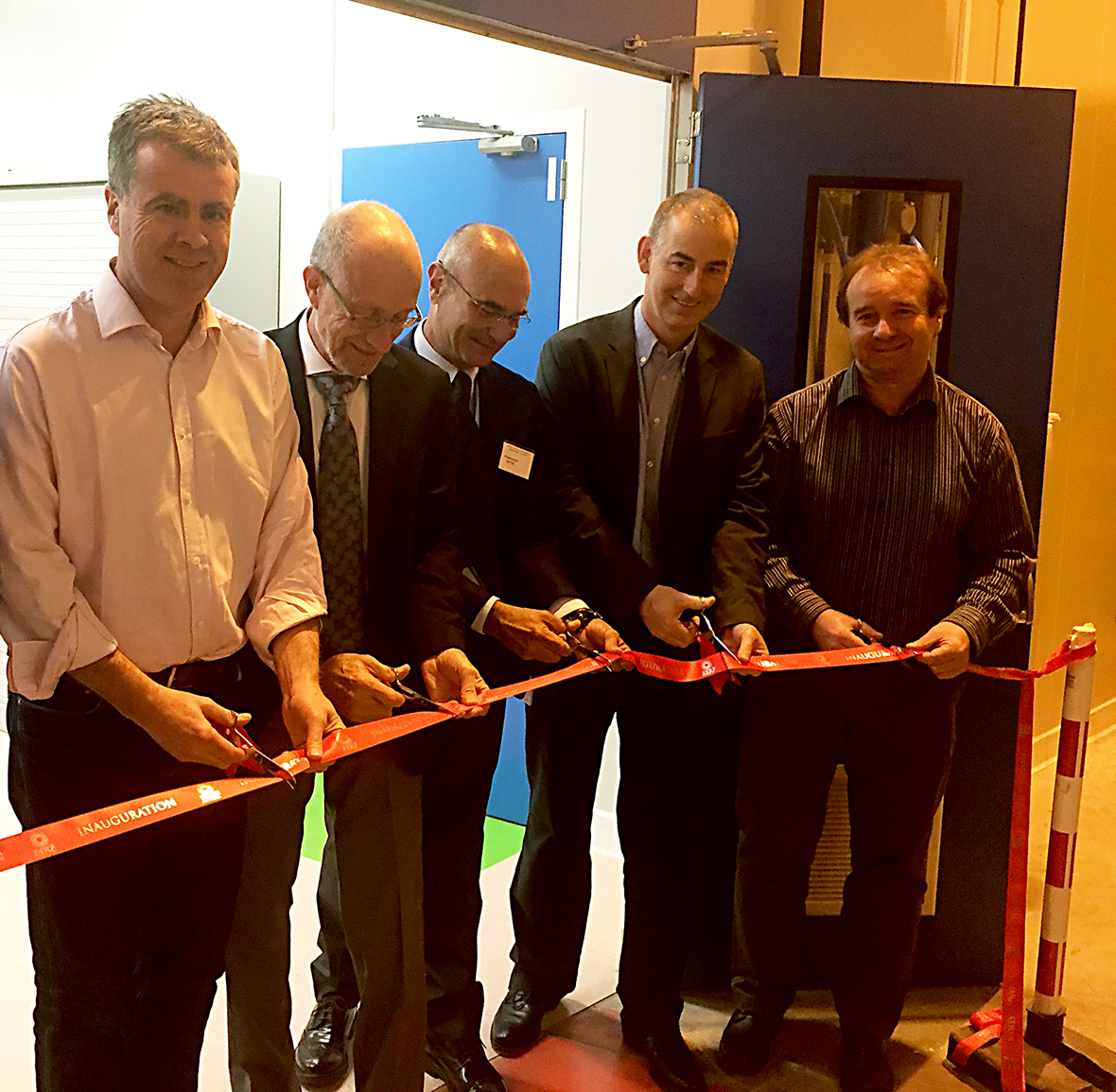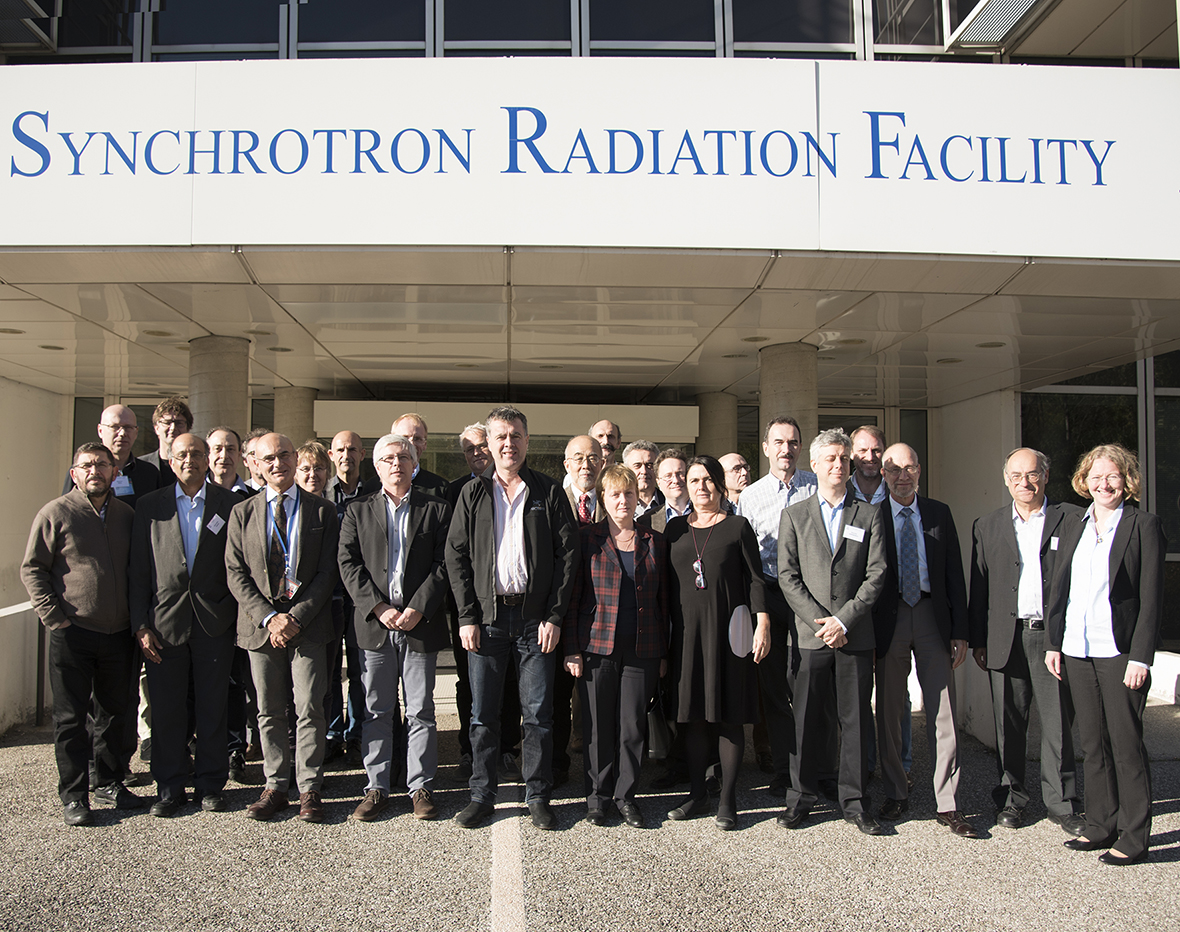- Home
- News
- General News
- Ribbon cutting for...
Ribbon cutting for ID30B and Crystal Analyser Laboratory
06-11-2015
The ESRF took the opportunity of the SAC autumn meeting to inaugurate the last structural biology beamline of the Upgrade Phase I and the Crystal Analyser Laboratory.
On 5th November, members of staff from both ESRF and the EMBL Grenoble Outstation, the two institutes which have collaborated on the construction and commissioning of the beamline ID30B, joined the Chairman and members of the SAC, and the ESRF Directors for a ribbon-cutting inauguration of ID30B, the last structural biology beamline of the Upgrade Phase I.
ID30B is an energy-tuneable beamline equipped with a Pilatus3 6M detector, a variable beam size [20 -200 mm] at the sample position, an MD2S micro-diffractometer that allows in-situ screening of crystallisation plates and a versatile FlexHCD sample changer that accepts samples mounted in either SPINE standard baskets or UniPucks.
 |
|
Christoph Mueller-Dieckmann, scientist on ID30B, with the Chairman of the SAC and members of the ESRF and EMBL before cutting the red ribbon. Credit: ESRF/D. Chenevier |
As all the other ESRF beamlines for structural biology, ID30B is operated by the ESRF-EMBL Joint Structural Biology Group with scientists, engineers and technicians from both facilities working together on hardware and software developments to provide a state-of the-art environment for experiments in Macromolecular Crystallography.
"The beamline welcomed its first users in June 2015 and several protein structures have since been solved. ID30B was highly demanded in the last proposal round and we look forward to seeing some exciting science carried out on the beamline," says Christoph Mueller Dieckmann, scientist on ID30B.
 |
|
Inauguration of the Crystal Analyser Laboratory. From left to right: Desmond McMorrow, SAC Chairman; Jerry Hastings, SAC; Francesco Sette, ESRF Director General; Ray Barrett, Head of ESRF X-ray optics group; Roberto Verbeni, Head of the Crystal Analyser Laboratory. Credit: ESRF/D. Chenevier. |
The ribbon-cutting continued with the inauguration of the Crystal Analyser Laboratory (CAL) which is dedicated to the fabrication of spherical analyser crystals. These are key optical elements of X-ray spectrometers, offering a vastly improved energy resolution compared with energy dispersive detectors, as well as focusing and imaging capabilities. Building on accomplishments carried out at other synchrotron facilities across the world their production at the ESRF has been an ongoing subject of research and development since the 1990s.
The new laboratory covers an area of 120m2 including a clean room of 60m2. It produces mainly spherically bent, bent-diced and diced Silicon analyser crystals.
"These optical elements are used on more than half a dozen instruments at the ESRF and we are receiving an increasing demand from other laboratories around the world. The CAL has produced more than 50 analysers since it opened in February, which is a considerable achievement.” Michael Krisch, ESRF Head of the Instrumentation and Detector Division.
 |
|
Members of the ESRF Science Advisory Committee with SAC Chairman, Desmond McMorrow and ESRF Director General, Francesco Sette during the autumn meeting. Credit: ESRF/C. Argoud. |
Top image: Ribbon-cutting at ID30B. Left to right: Andrew McCarthy, scientist in charge of ID30B; Desmond McMorrow, SAC Chairman; Jean Susini, ESRF Director of Research; Christoph Mueller-Dieckmann, scientist on ID30B; Harald Reichert, ESRF Director of Research. Credit: ESRF/D. Chenevier.



